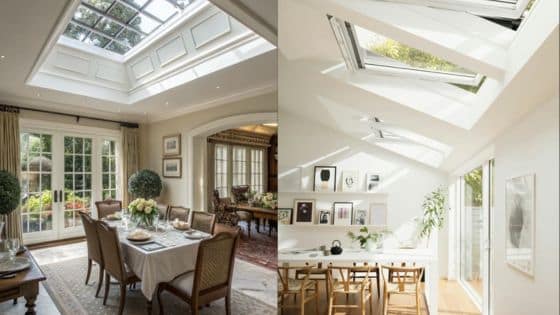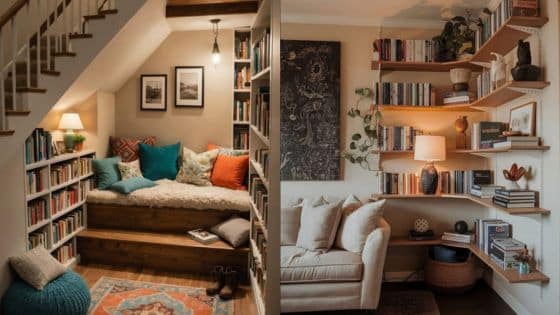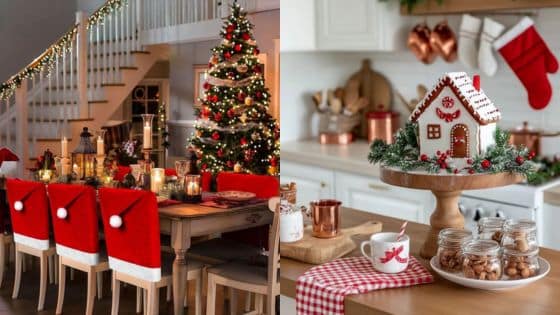Living in a small space can be a challenge, but decorating it well makes a big difference. The key is to use smart ideas that make the room feel bigger and more organized without crowding it. Using light colors, reflective surfaces, and furniture that serves more than one purpose helps open up the space.
People often overlook how important lighting is in small rooms. Bright lighting or natural light can make a tiny area feel fresh and airy. Adding shelves or wall-mounted units keeps the floor clear and maximizes every inch without clutter.
Clever choices like fold-up furniture or pieces with hidden storage also save room and keep things neat. These small changes show that even with limited space, style and comfort don’t have to be lost.
Maximizing Space Efficiency
Using the right furniture, smart storage solutions, and flexible room setups helps make small spaces feel bigger and work better. Careful choices focus on saving room while keeping the area comfortable and stylish.
Smart Furniture Choices



Choosing furniture that fits the space well is key. Pieces with exposed legs can make a room feel airier and less crowded.
Foldable or stackable chairs offer flexibility and save space when not in use. A Murphy bed or lofted bed can open up floor area during the day.
Small-scale furniture, like petite sofas or compact tables, fits better and doesn’t overwhelm a room. Multi-functional furniture, such as ottomans with storage inside, adds convenience without extra clutter.
Vertical Storage Solutions



Using walls and vertical space helps clear floors and organize items efficiently. Tall shelves or cabinets draw the eye upward, making the room seem larger.
Hooks, pegboards, and wall-mounted racks offer easy access to everyday things without sacrificing floor space. Floating shelves keep storage open and light.
In kitchens or bathrooms, stacking baskets or containers takes advantage of narrow spots. Using vertical strips or rails can hold tools, utensils, or accessories neatly.
Multipurpose Rooms



Designing rooms to serve multiple functions is a space saver. A living room can double as a guest bedroom with a sofa bed.
Work desks that fold away or serve as dining tables help keep rooms flexible. Zoning areas within a room with rugs or furniture arrangements creates distinct uses without adding walls.
Having specific zones for sleep, work, and play in one room improves flow and ensures the space meets daily needs effectively.
Creative Decor Strategies
Small spaces benefit from thoughtful design choices that make rooms feel brighter, bigger, and more inviting. Using color wisely, adding mirrors thoughtfully, and placing wall art with care can all change the way a room looks and feels.
Color and Light Techniques



Light colors like soft whites, pale blues, and light grays help walls and furniture blend with natural light. This makes rooms feel more open. Matte finishes reduce glare, while semi-gloss can reflect light in small doses, adding brightness without overwhelming.
Layering light is key. Combine ceiling lights, floor lamps, and task lighting to reduce shadows and draw the eye upward. Avoid heavy curtains; instead, use sheer panels to let in sunlight while keeping privacy.
Choosing furniture in light tones also helps. If darker pieces are necessary, balance them with lighter rugs or cushions. Simple color palettes with only a few shades keep things calm and open.
Mirrors and Visual Expansion



Mirrors bounce light and create the illusion of depth. Placing a large mirror opposite a window doubles the natural light in the room. Even small mirrors grouped together can add a fun, reflective element.
Vertical mirrors make ceilings seem higher, which can visually enlarge the room. Frameless or thin-framed mirrors avoid cluttering space and can blend more easily with decor.
Mirrors work best when kept clean and uncovered by decor. Using them near plants or colorful objects can brighten the entire area and add dimension.
Wall Art Placement



In small rooms, wall art should enhance without crowding. Large single pieces can be striking, but a few smaller artworks arranged with space between them often work better to keep the wall from feeling busy.
Hanging art slightly above eye level draws attention upward, helping rooms feel taller. Avoid placing art too close to furniture to give it space to stand out.
Choosing light or muted colors for frames helps art blend gently. Using shelves for art allows easy swaps and layering with smaller decor items. This keeps the room fresh and interesting without adding clutter.
Organizing for Style and Function
A small space works best when it stays neat and purposeful. Using smart methods to clear clutter, adding storage that hides items away, and keeping the design simple help make a room both attractive and useful.
Decluttering Methods



Clearing out unnecessary items is the first step. One easy way is to sort belongings into keep, donate, or toss piles. This stops clutter before it builds up.
Using everyday habits helps too. For example, setting a timer for 10 minutes a day to tidy can keep mess from piling up. It also makes cleaning less overwhelming.
Organizing small spaces often means choosing only things that serve a purpose or bring joy. This keeps the room feeling open and fresh.
Hidden Storage Ideas
Small spaces benefit a lot from hidden storage. Furniture pieces like ottomans or beds with built-in storage boxes make use of unused space.
Wall shelves or cabinets can store items without taking up floor room. Hooks and organizers behind doors are great spots too.
Using vertical space frees up the floor for living. Boxes or baskets tucked under tables or sofas also keep things out of sight but easy to reach.
Maintaining a Cohesive Look
Keeping a consistent style helps the space feel calm and bigger. Using a limited color palette ties everything together neatly.
Furniture with simple lines and matching finishes looks less busy. Using similar materials in storage and decor keeps the room unified.
Clear surfaces with minimal decorations reduce visual clutter. Small pops of color in cushions or art add personality without overwhelming the space.
- 3shares
- Facebook0
- Pinterest0
- Twitter3
- Reddit0













